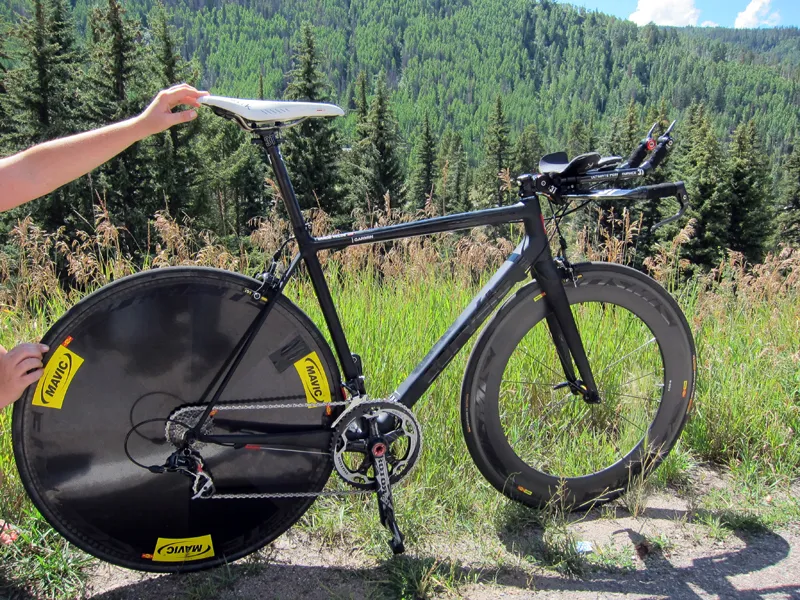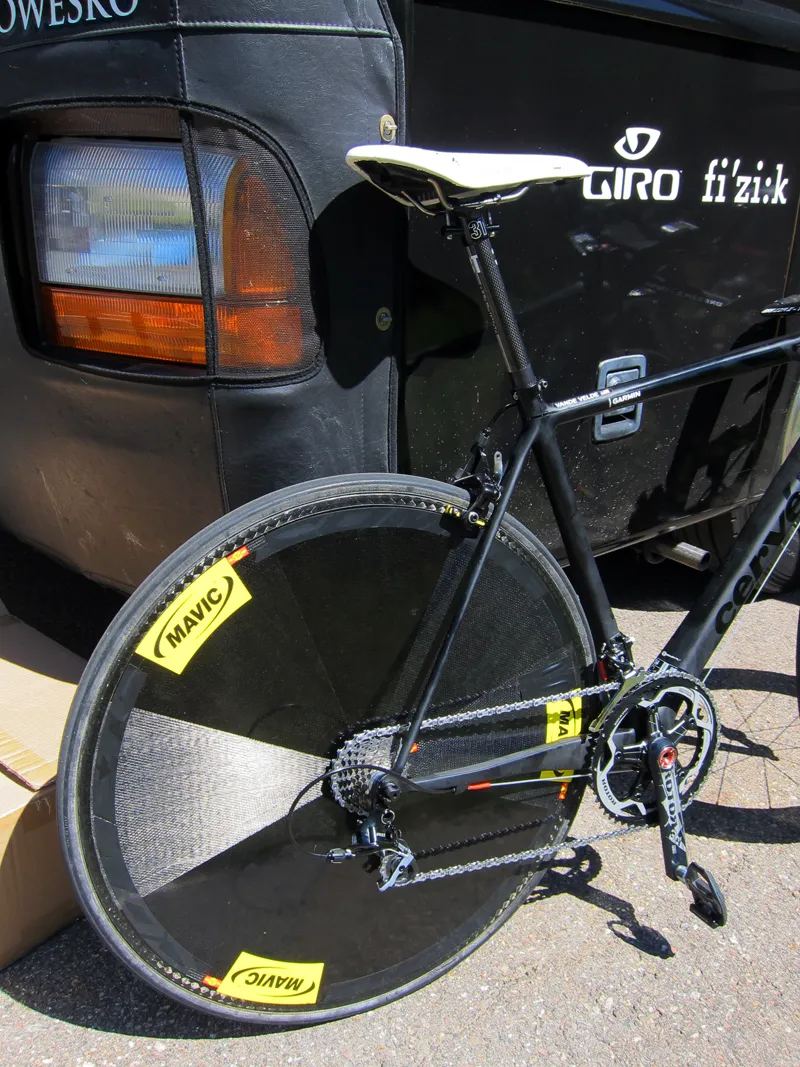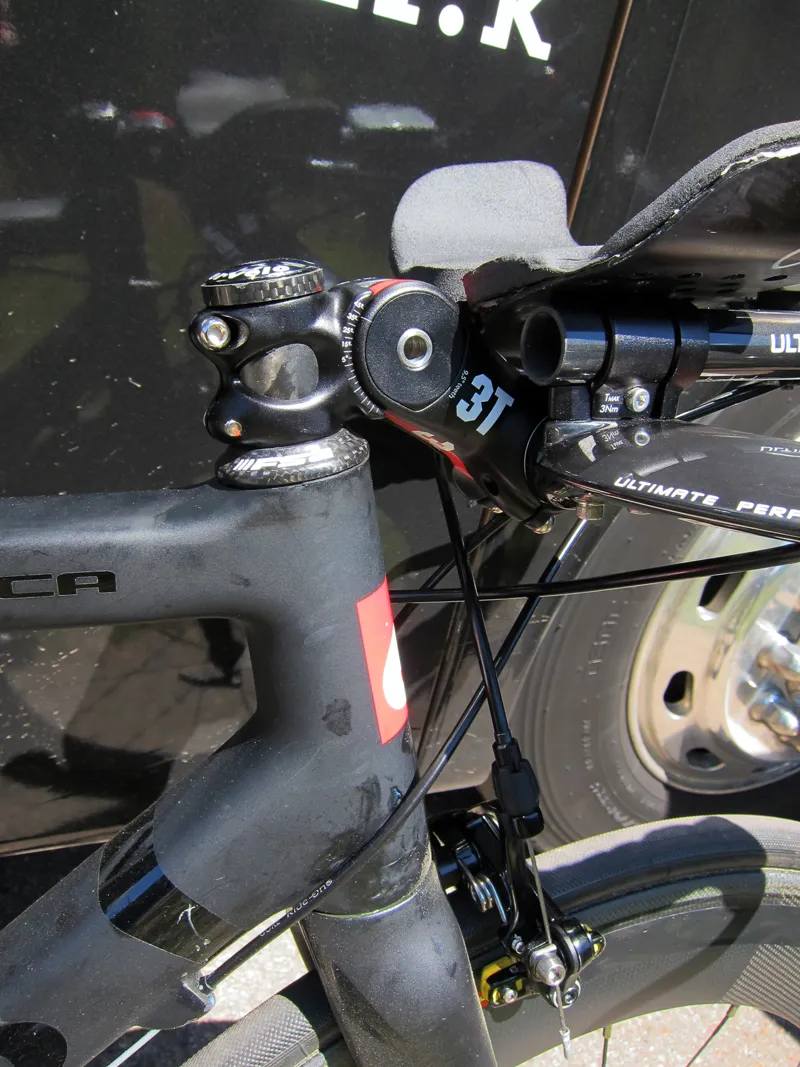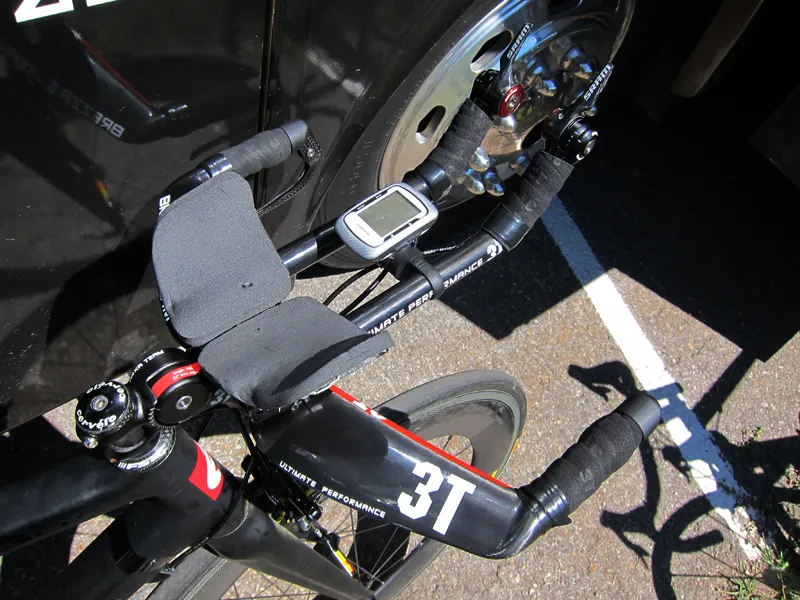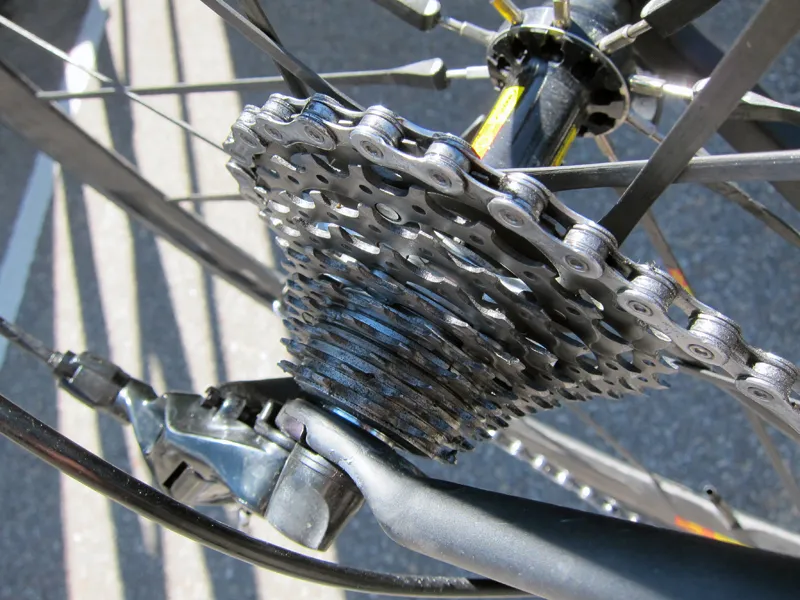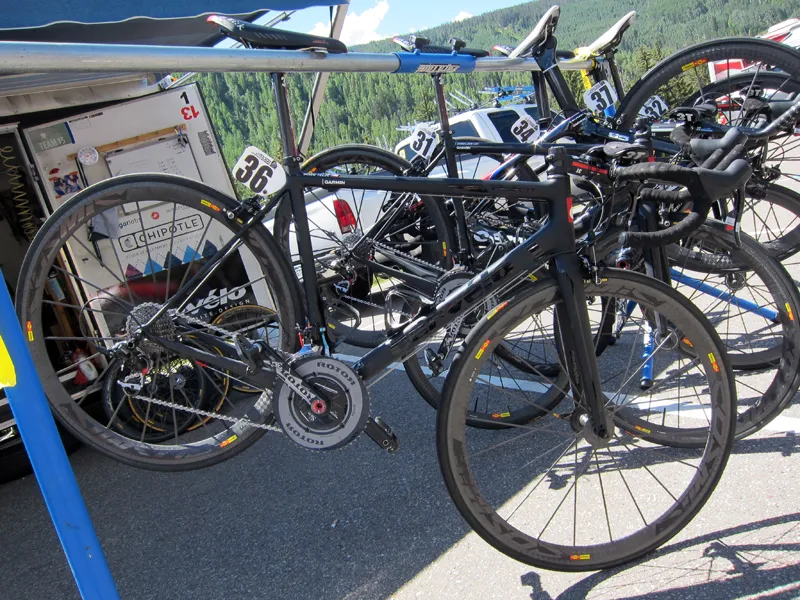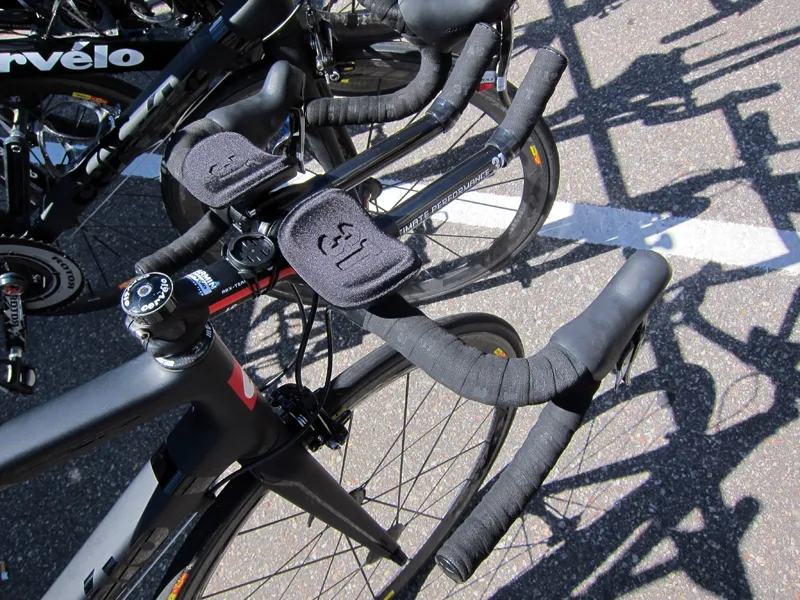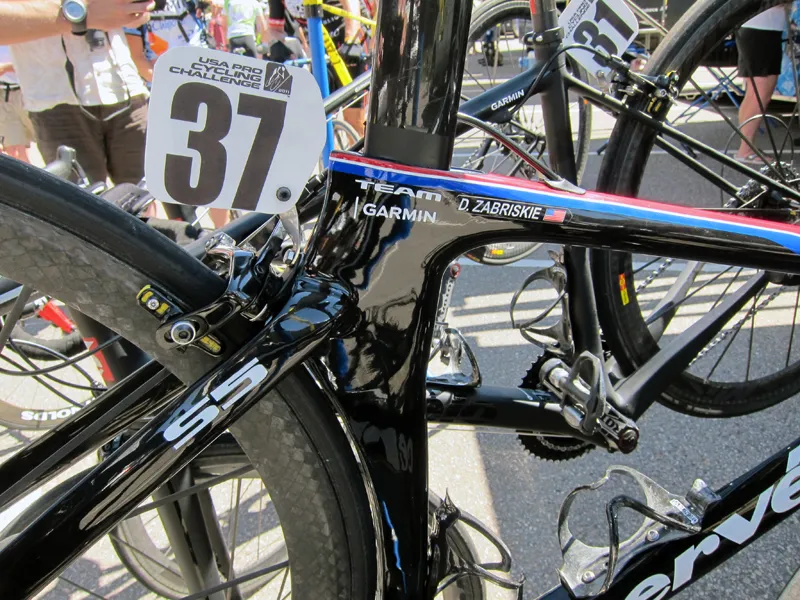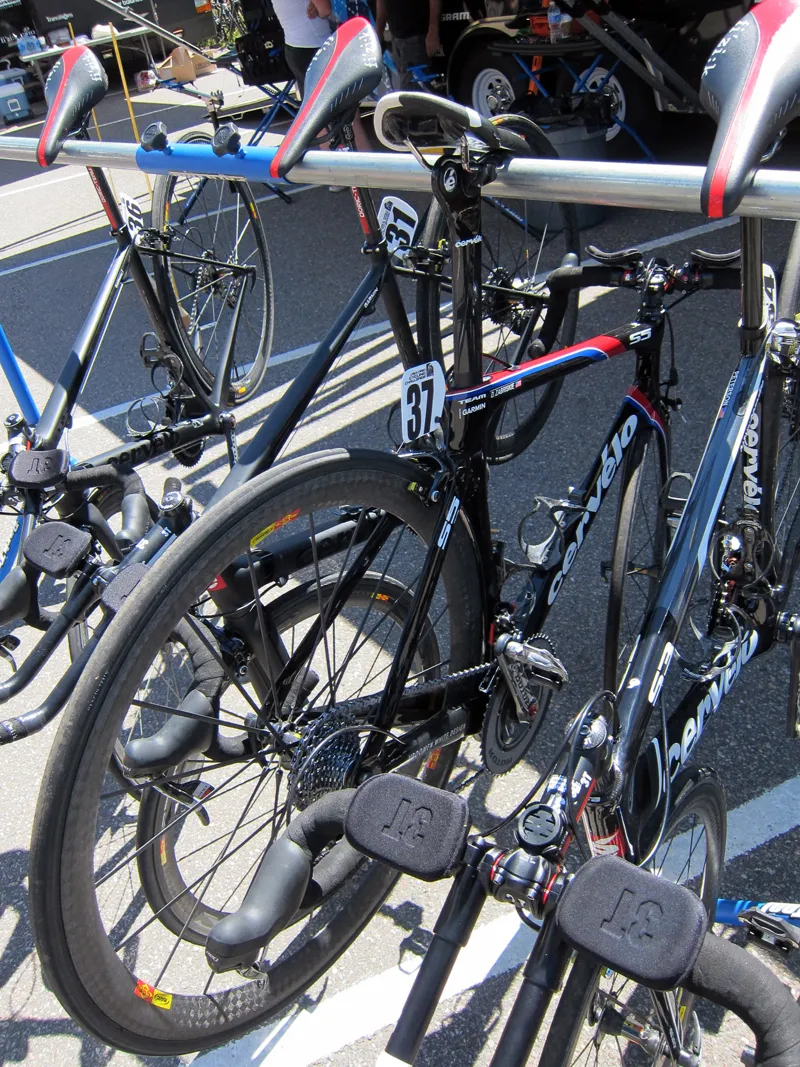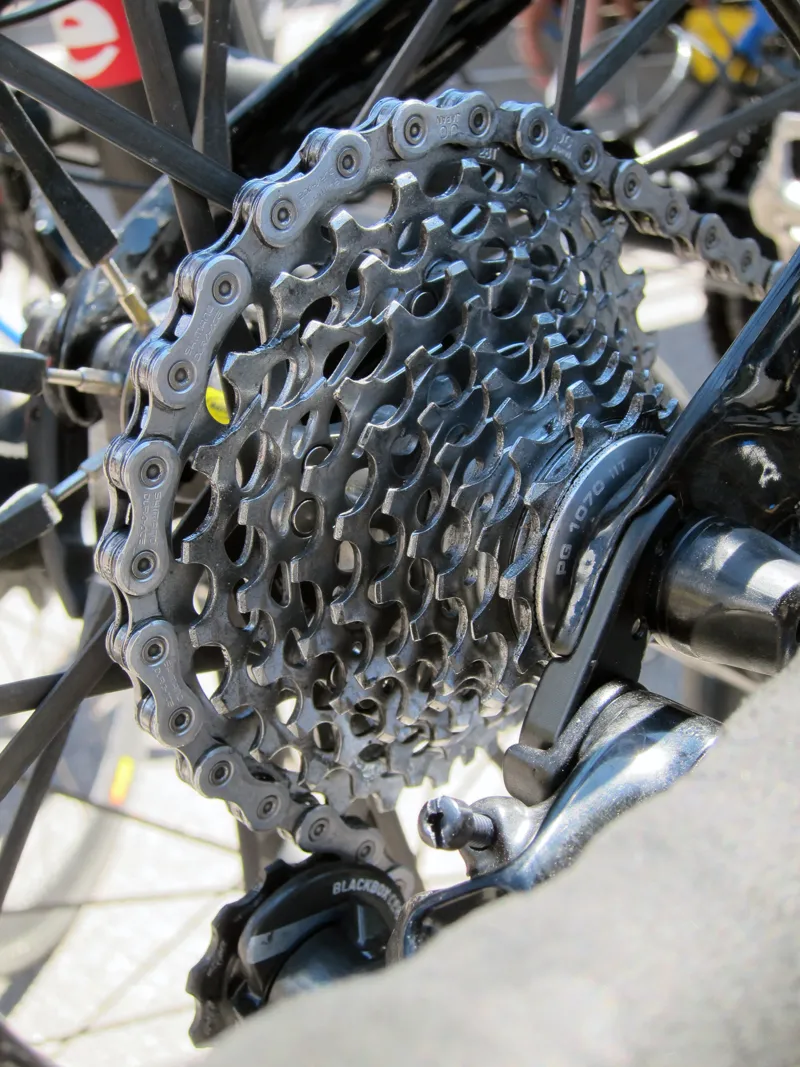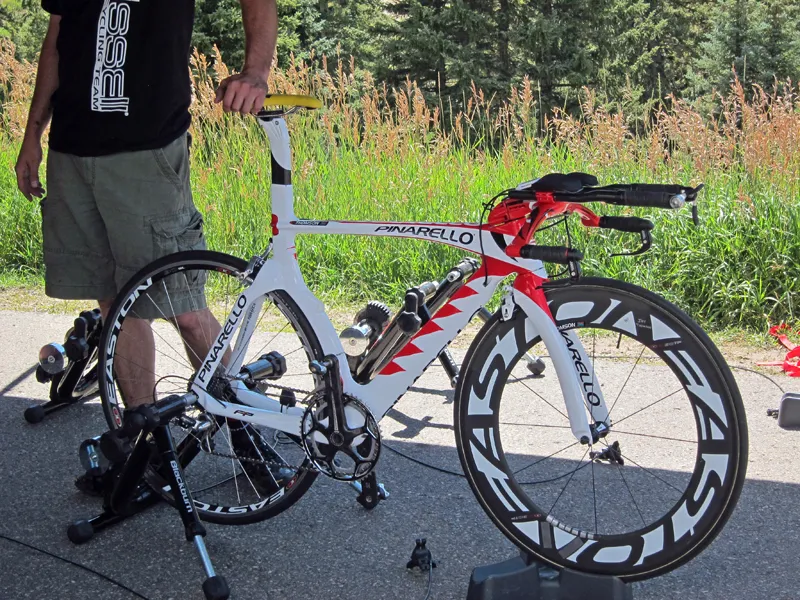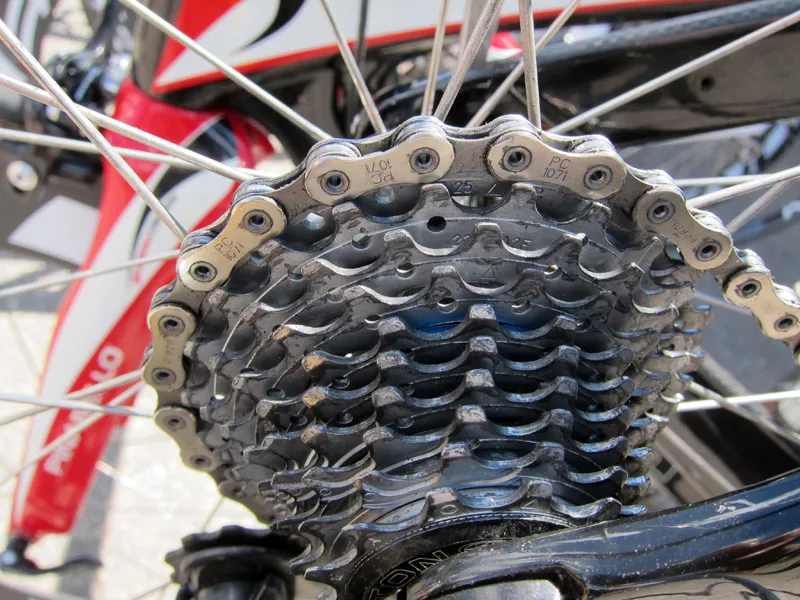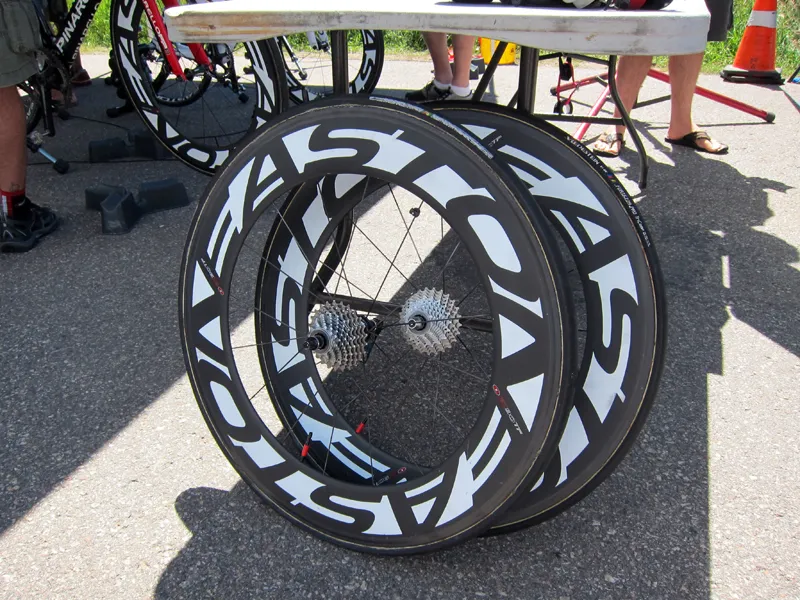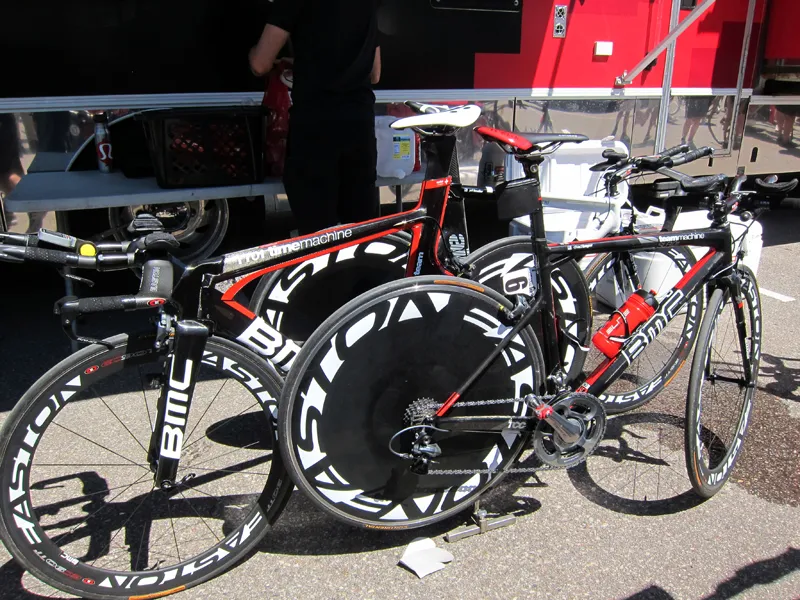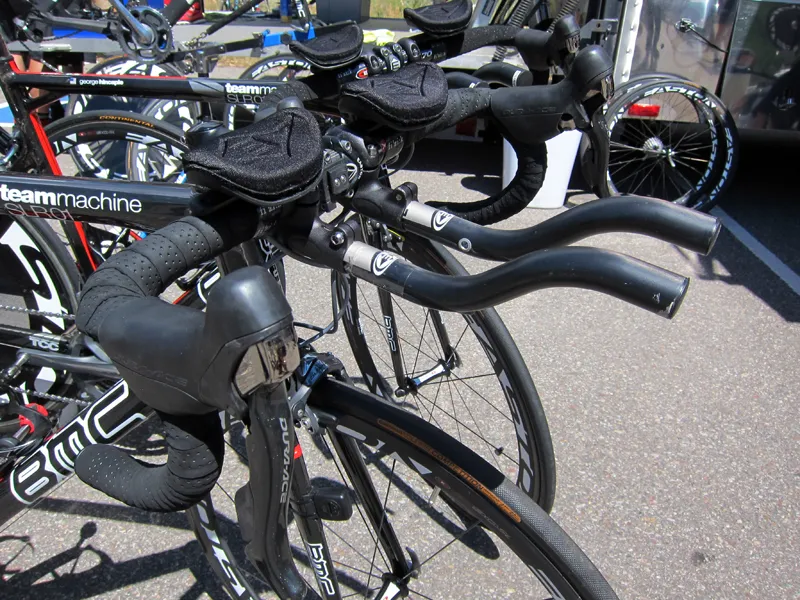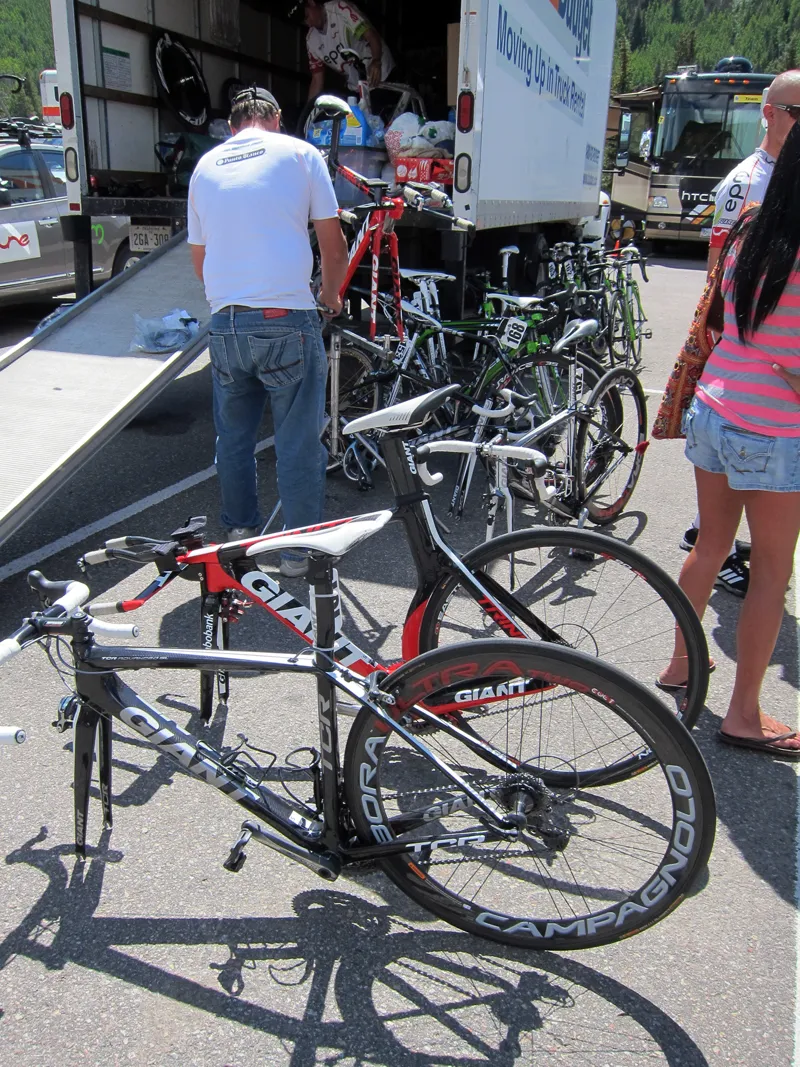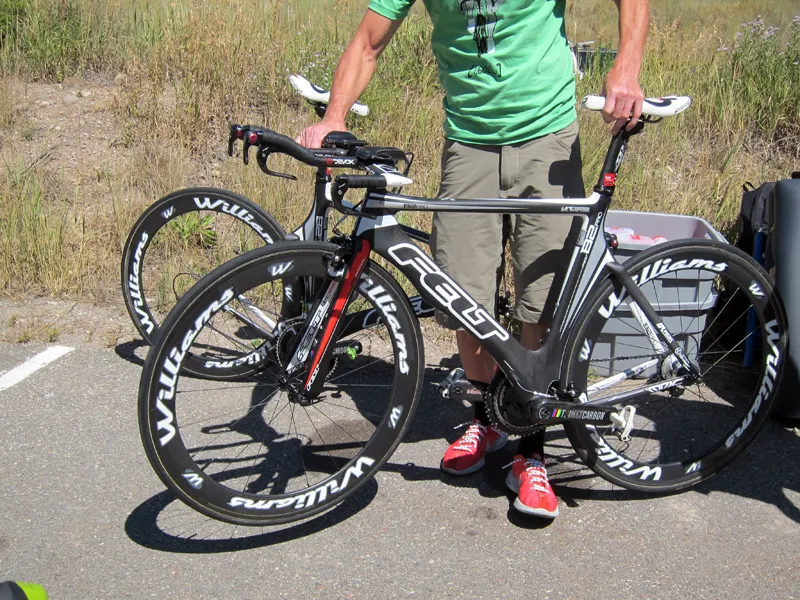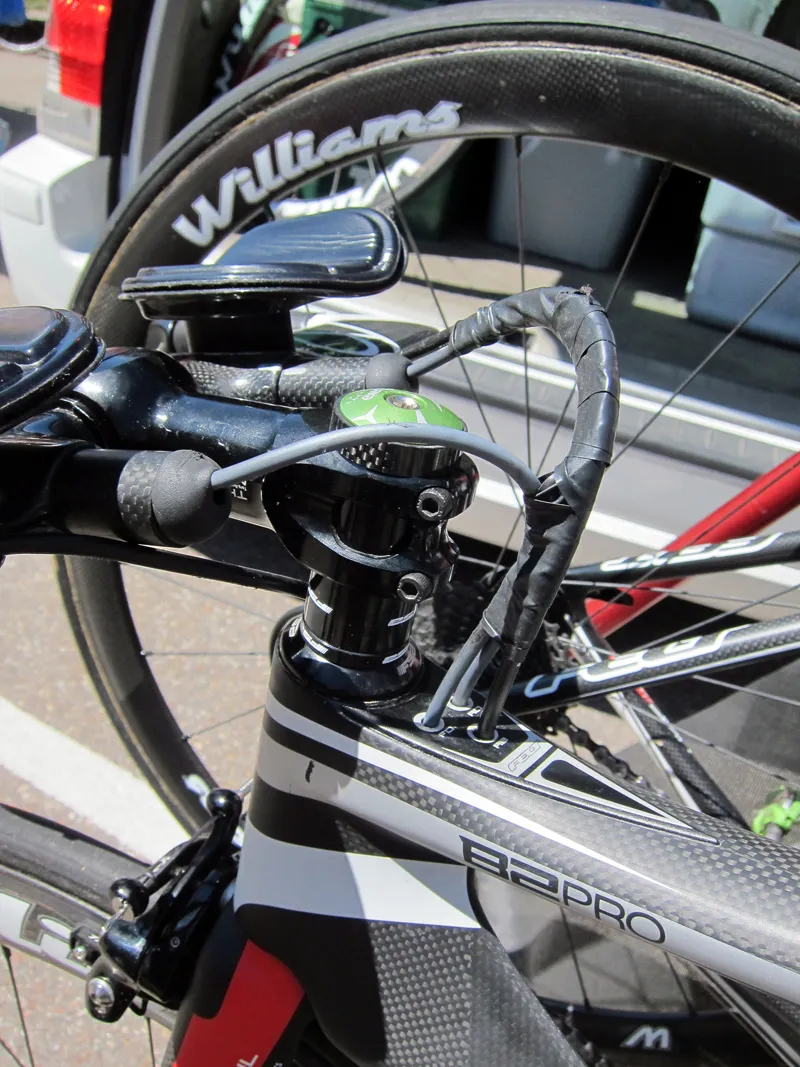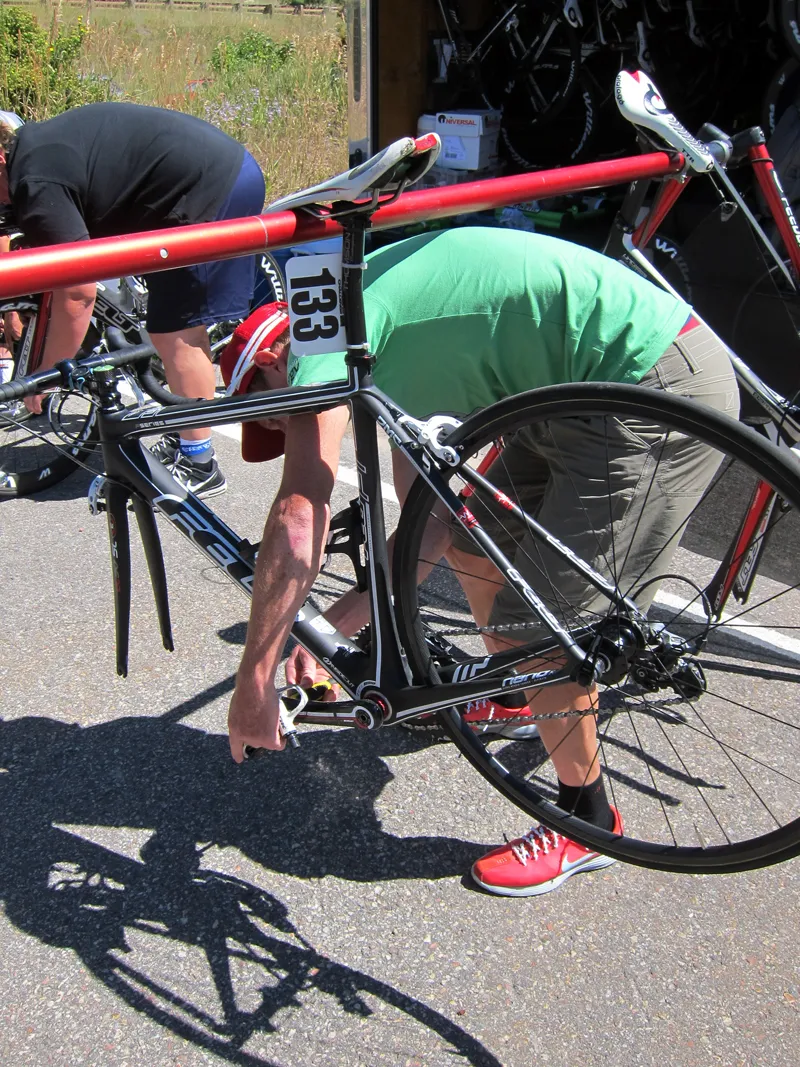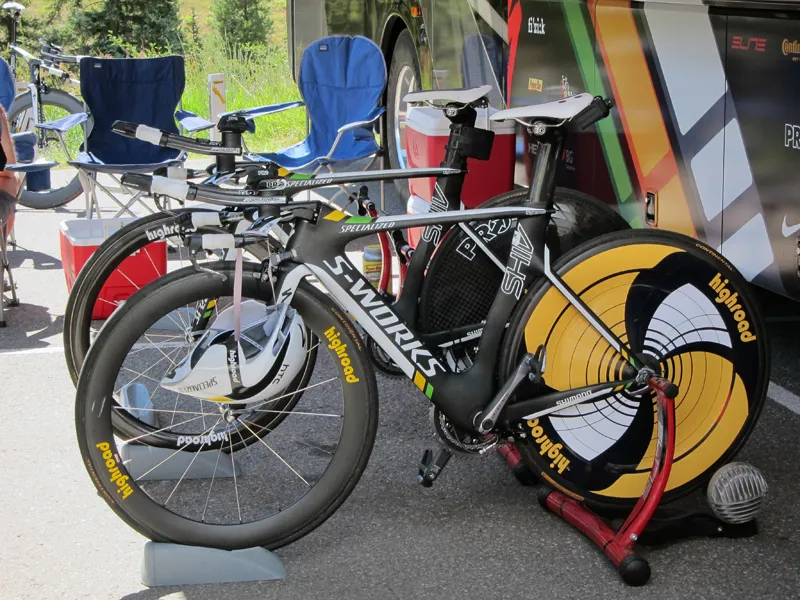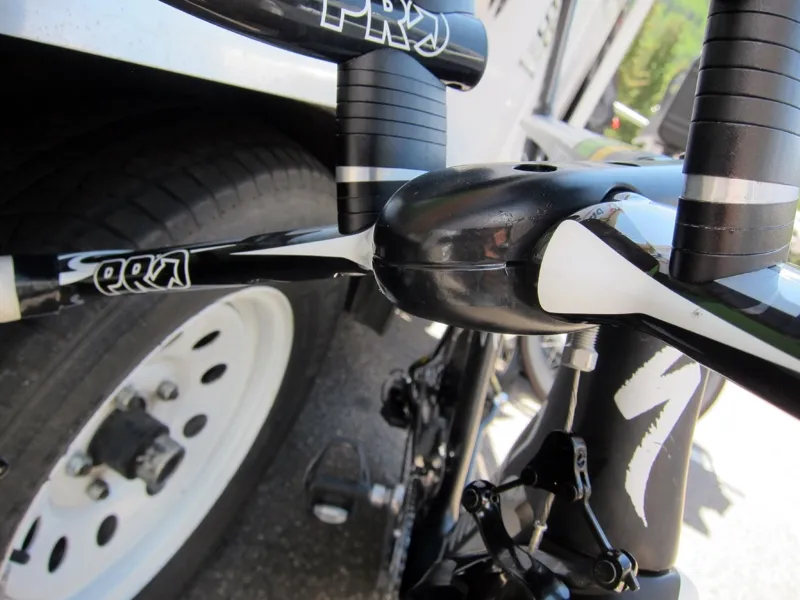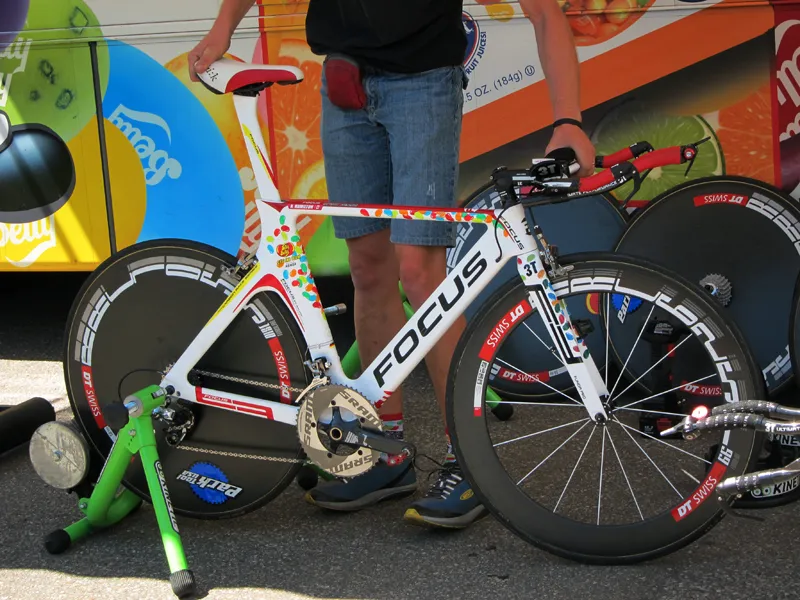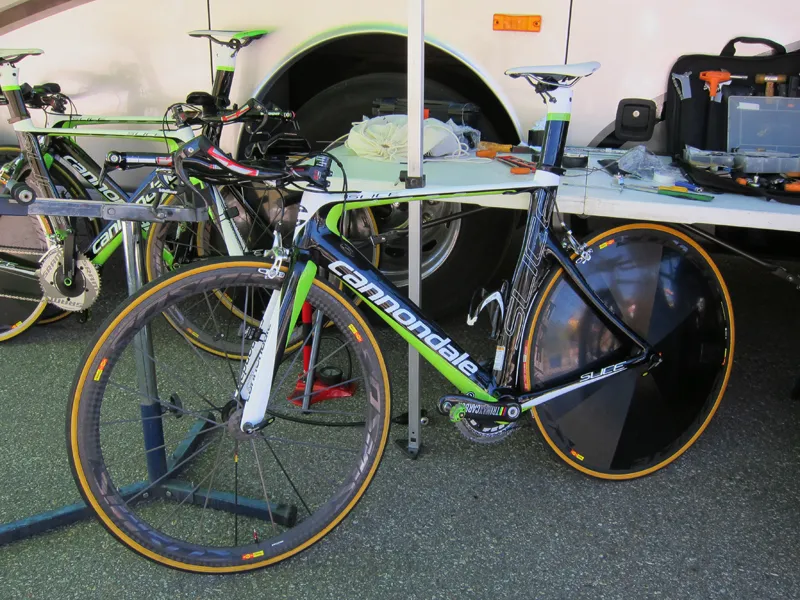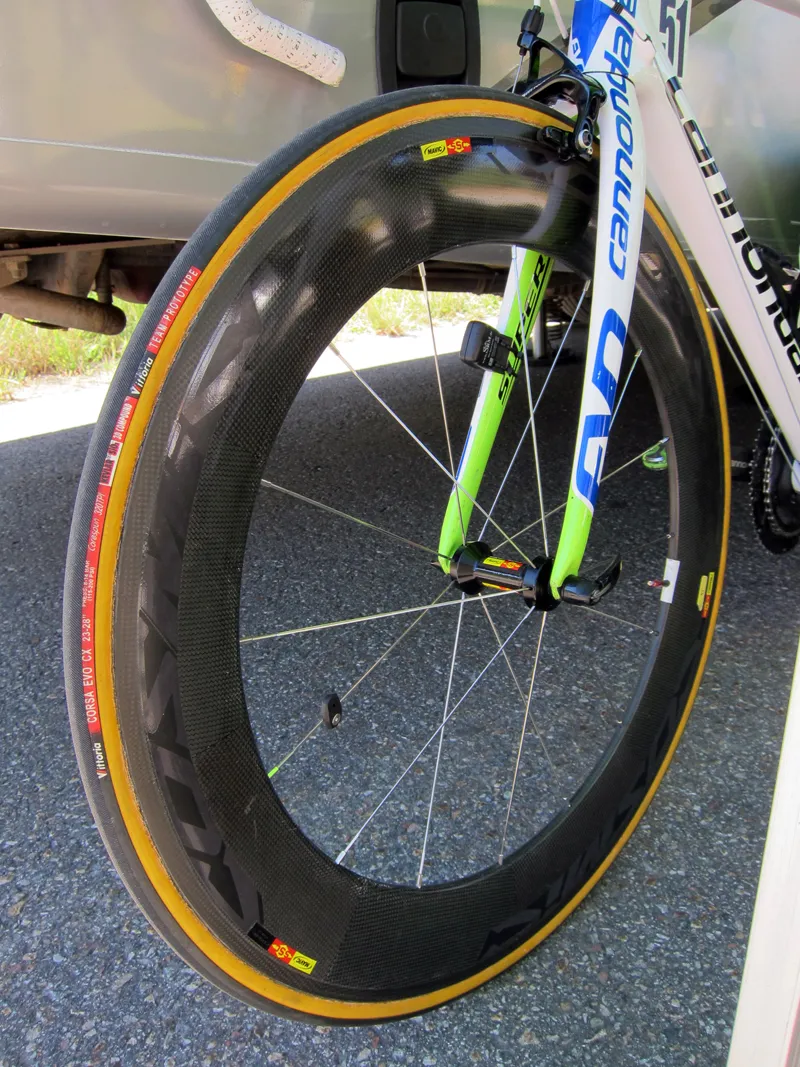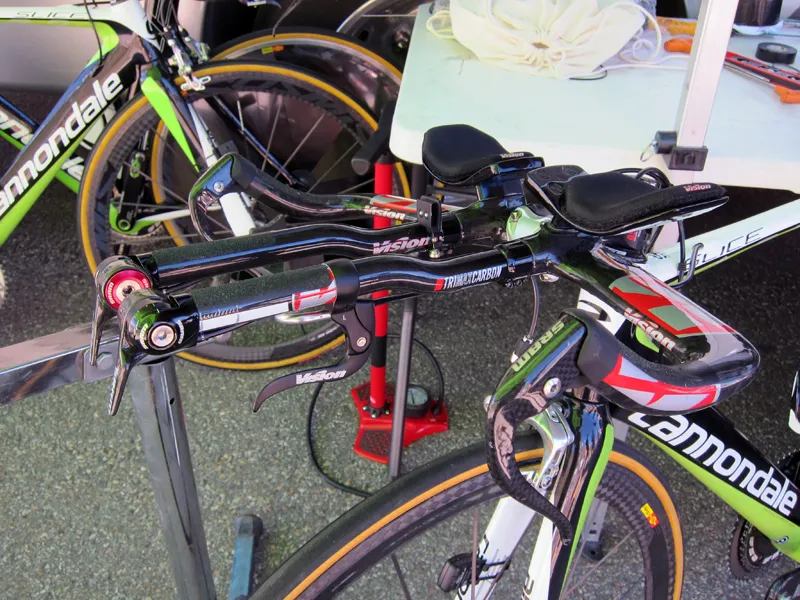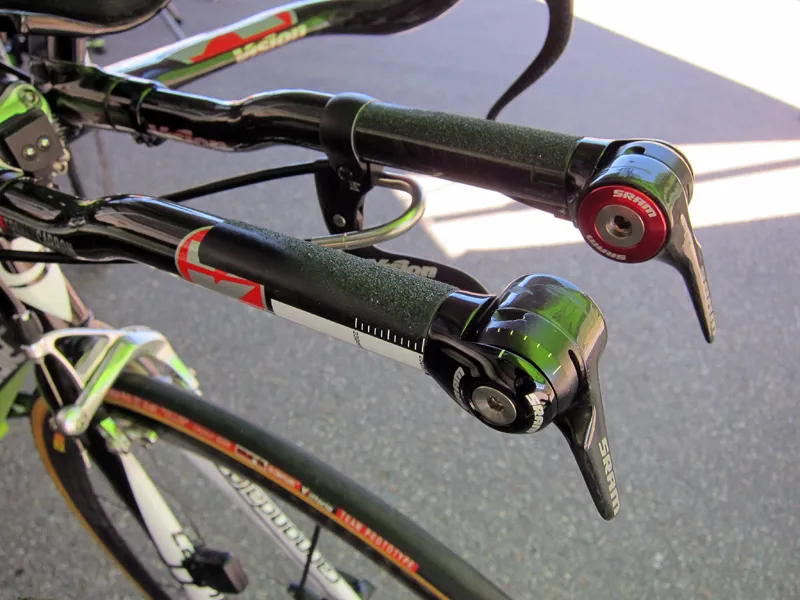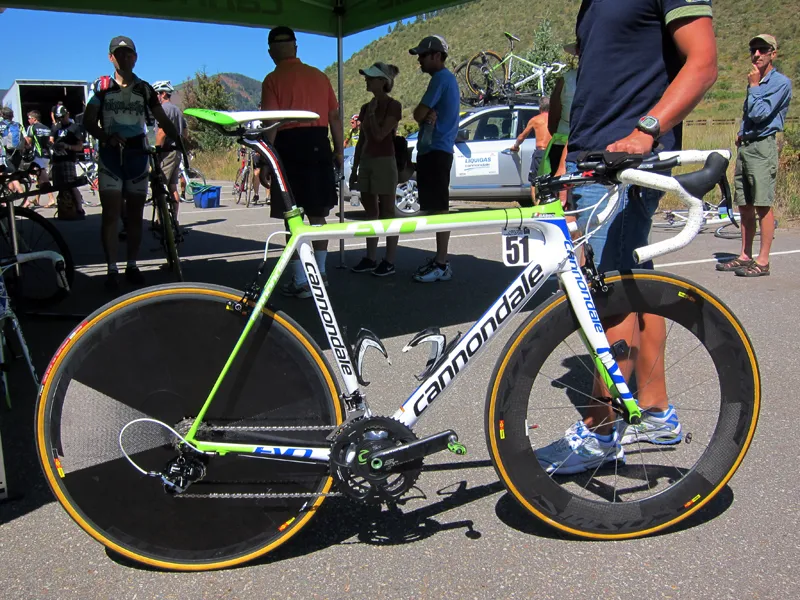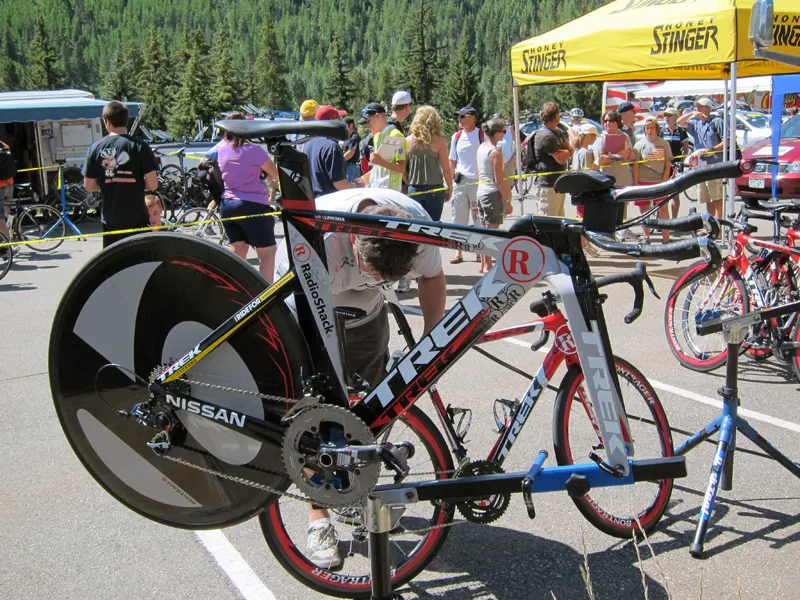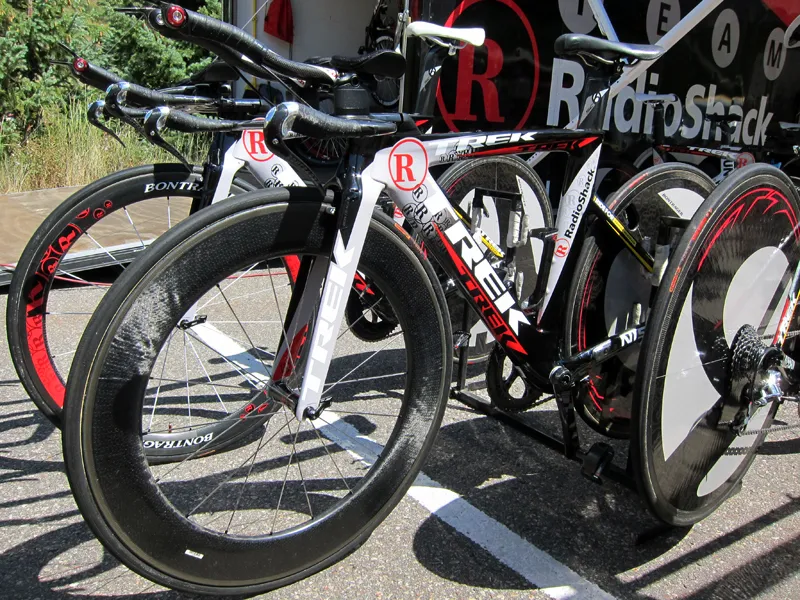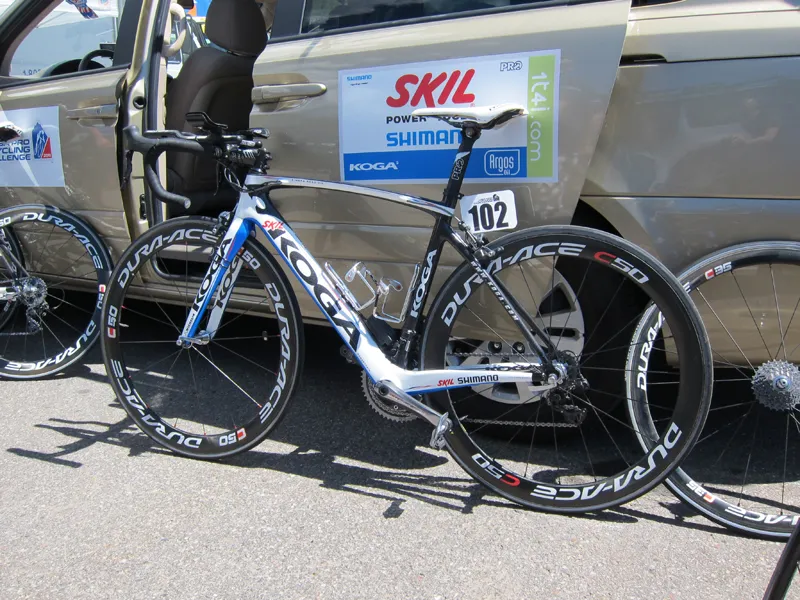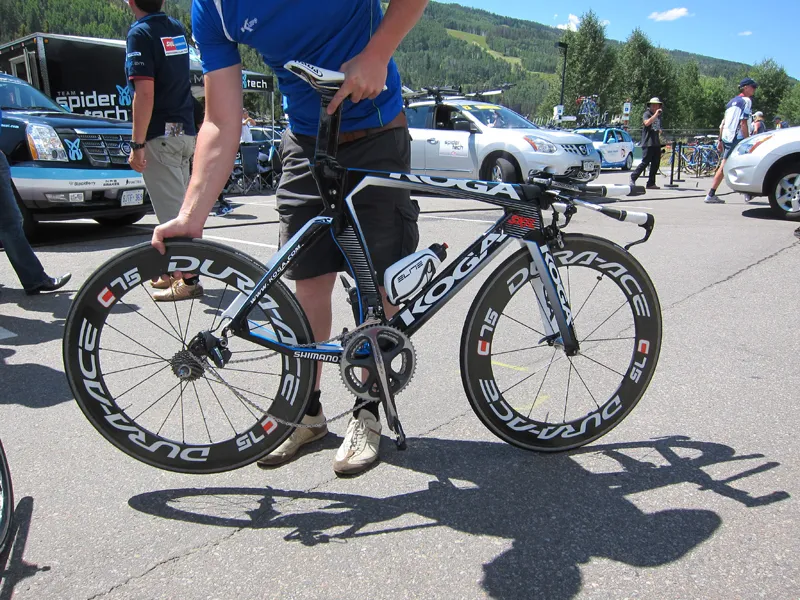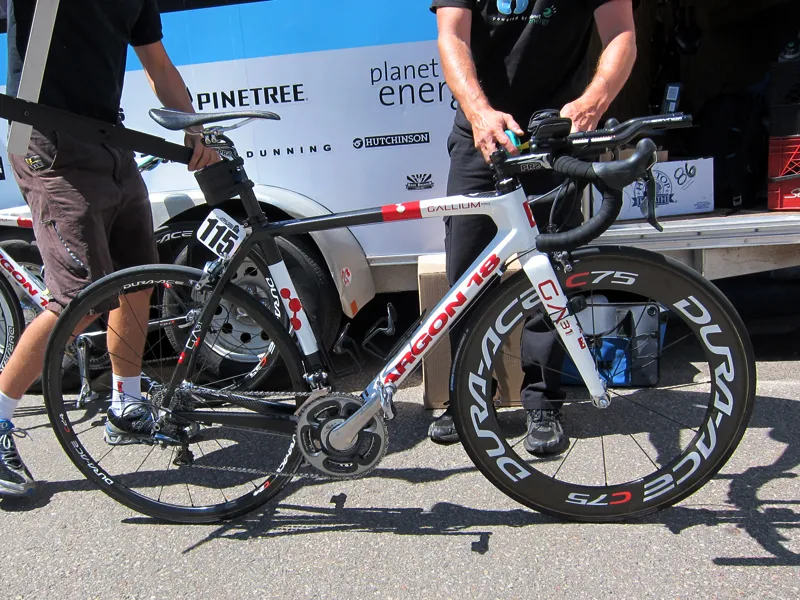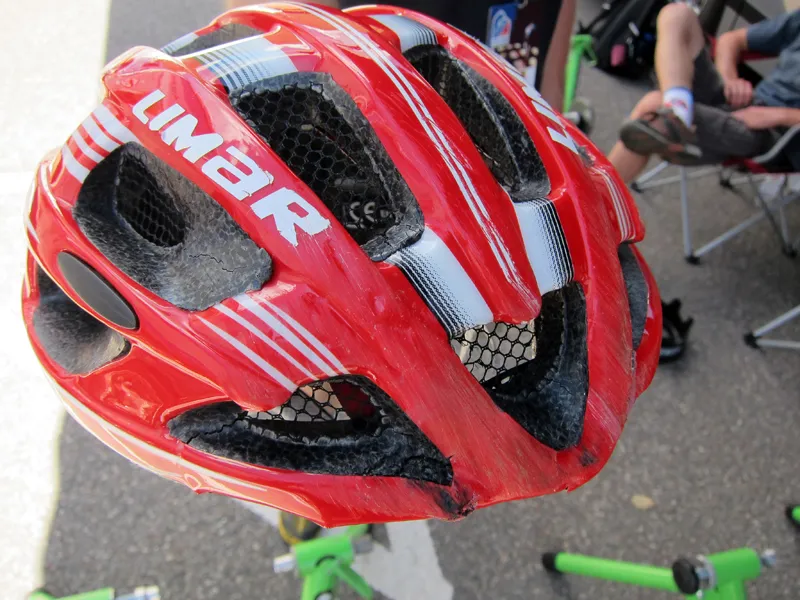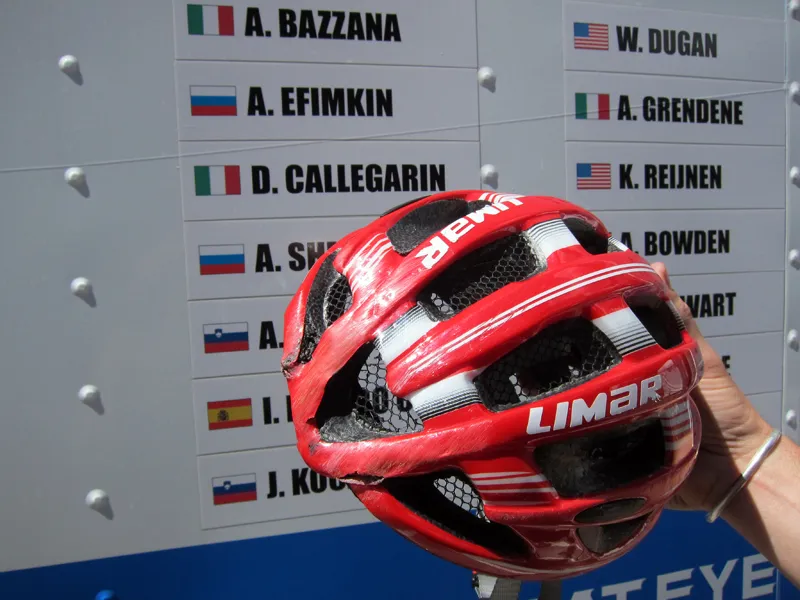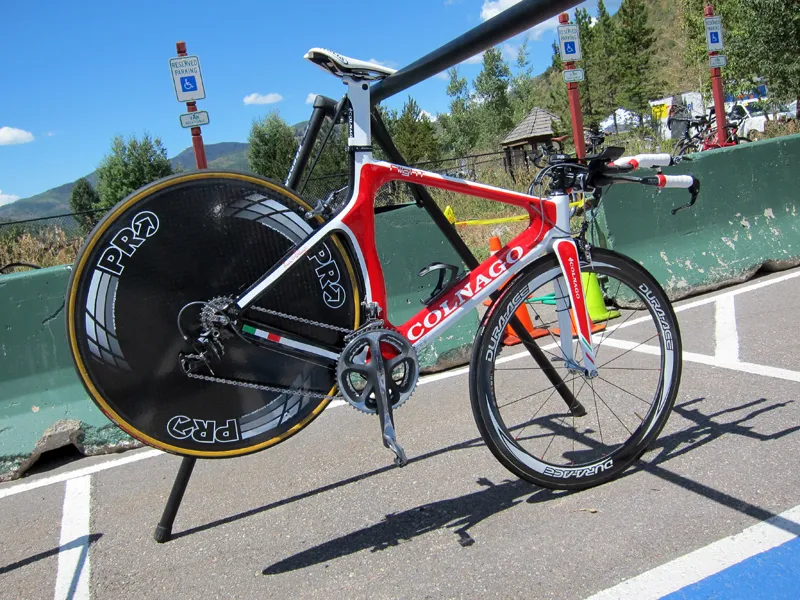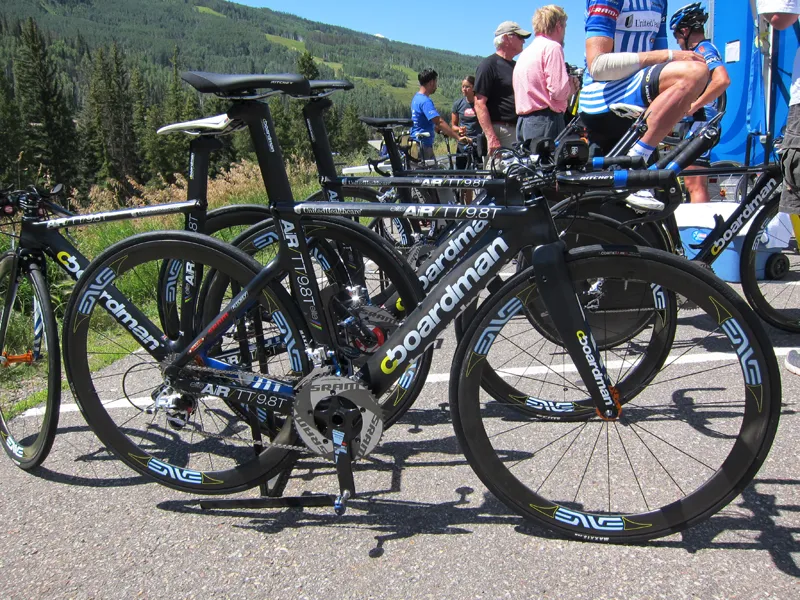Yesterday's USA Pro Cycling Challenge stage 3 time trial wasn't your average race against the clock. Though the course climbed a significant 530m (1,738ft) over its 16.1km (10.0mi) length, the first half was only mildly uphill and many riders were treated to a healthy tailwind – making it neither a blisteringly fast individual effort nor a pure hill climb. Not surprisingly then, many of the bikes used were novel hybrids tailored specifically to the day.
One of the most creative machines was Christian Vande Velde's Garmin-Cervélo rig. Built around Cervélo's ultralight R5ca frame – a roughly 700g featherweight normally reserved for big mountain stages – team mechanics dressed it up in full aero gear, including a disc rear wheel, deep-section front wheel and integrated aero bars mounted on an adjustable stem. According to team sports scientist Robbie Ketchell, Vande Velde's position was nearly identical to that of his full-blown P4 time trial rig.
Given the nominal gains offered by even the best aero frames, the trick setup likely represented only a slight increase in drag. More importantly, though, the ultralight chassis yielded a final package that was unusually light for a time trial bike – a key performance advantage for the second half of the course. According to team mechanic Geoff Brown, Vande Velde's aero-dressed R5ca was well under 7kg (15.4lb).
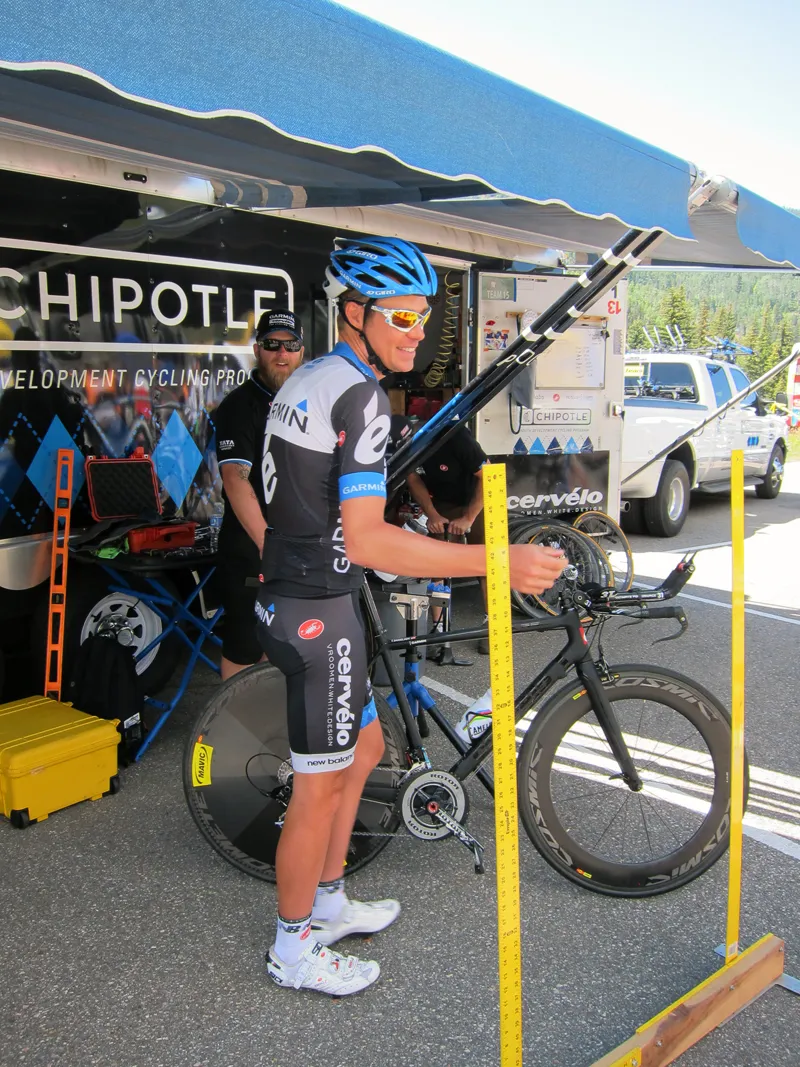
Tom Danielson (Garmin-Cervélo) had his own trick road/time trial hybrid setup
Many teams stuck to their standard time trial bikes, preferring to just tweak the setups with slightly taller bar heights and/or larger rear cassettes to better handle the climb. But road/time trial hybrids like Garmin-Cervélo's machines were definitely present en masse – just in more mild incarnations that typically involved a set of aero clip-ons and deep section, or disc, wheels.
One thing we were surprised not to see, however, were Shimano Dura-Ace Di2-equipped teams taking advantage of the group's plug-and-play satellite bar end shifters. While we haven't tried the combination ourselves, mechanics should have been able to add clip-on bars to the riders' road bikes and add a very useful set of shifters out on the ends of the extensions to save a few valuable sections on the faster lower section of the course.
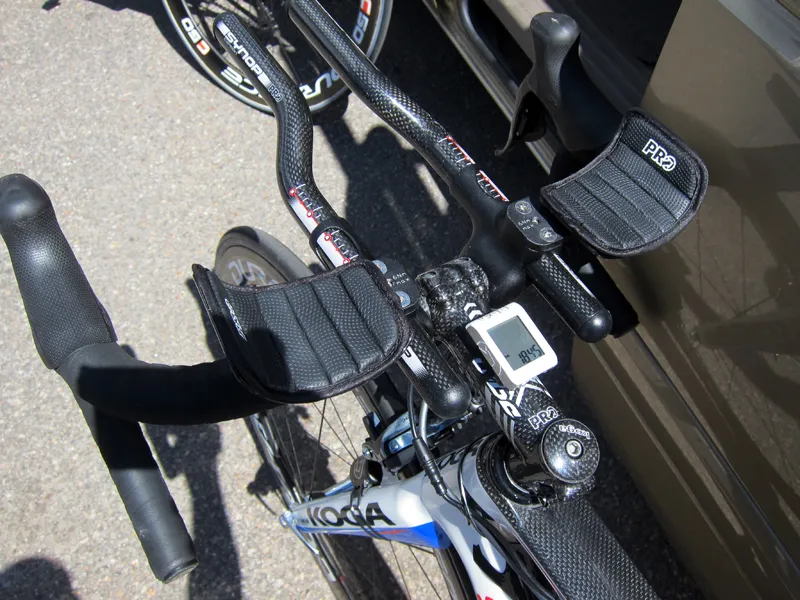
At least in theory, Skil-Shimano team mechanics could have added bar end shifters to this hybrid setup
